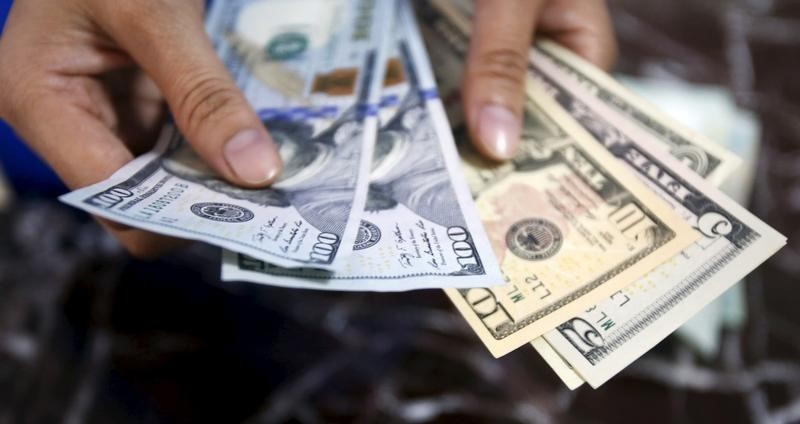Investing.com - The dollar remained braodly lower against the other major currencies on Thursday, after data showed that U.S. jobless claims fell less than expected last week and as fears over the outlook for China’s economy continued to support demand for the safe-haven yen and Swiss franc.
USD/JPY was down 0.35% at 118.05.
The U.S. Department of Labor said the number of individuals filing for initial jobless benefits in the week ending January 1 decreased by 10,000 to 277,000 from the previous week’s total of 287,000, which was the highest since mid-July.
Analysts expected jobless claims to fall by 12,000 to 275,000 last week.
The greenback had slightly weakened after the minutes of the Federal Reserve’s December meeting showed that some officials expressed concerns that inflation could remain at stubbornly low levels, even as they decided to hike interest rates.
Meanwhile, demand for the safe-haven yen remained supported after the People's Bank of China set its official yuan midpoint rate lower compared with Wednesday's fix.
It was the largest daily drop in the midpoint rate since last August, when an unexpected almost 2% devaluation of the currency sparked a broad based selloff in markets.
EUR/USD advanced 0.74% to 1.0858.
Earlier Thursday, data showed that German factory orders rose 1.5% in November, beating expectations for a 0.1% uptick.
A separate report showed that German retail sales rose 0.2% in November, disappointing expectations for a gain of 0.5%.
Elsewhere, the dollar was higher against the pound, with GBP/USD down 0.25% at 1.4593 and was lower against the Swiss franc, with USD/CHF sliding 0.54% to 1.0020.
The Australian and New Zealand dollars were weaker, with AUD/USD down 0.71% at 0.7021 and with NZD/USD slipping 0.12% to 0.6632.
The Australian Bureau of Statistics reported on Thursday that building approvals declined by 12.7% in November, compared to expectations for a 3.0% fall.
A separate report showed that Australia’s trade deficit narrowed to A$2.906 billion in November from a revised deficit of A$3.247 billion in October.
Meanwhile, USD/CAD edged down 0.15% to trade at 1.4062, but remained close to a 12-1/2 year high of 1.4170 hit earlier in the session.
Speaking at a conference in Ottawa on Thursday, Bank of Canada Governor Stephen Poloz the BoC is content to allow the weak Canadian dollar to stay low.
Poloz says the bank won't try to match recent interest rate increases in the U.S., but will "continue to run an independent monetary policy, anchored by our inflation target of 2%."
The U.S. dollar index, which measures the greenback’s strength against a trade-weighted basket of six major currencies, was down 0.44% at 98.84.
